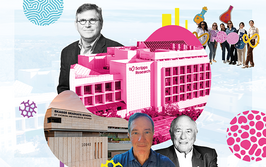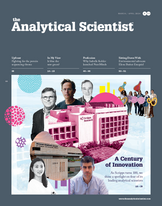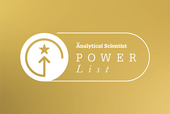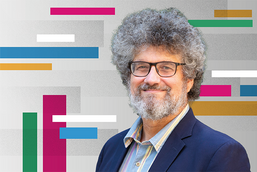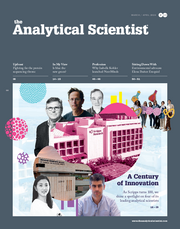Fighting for Scraps?
Chemistry’s diminished standing among the sciences has led to counterproductive departmental competition, which – alongside a fragmented approach to education – has hurt analytical chemistry. The damage has been done, but there are steps we can take to improve our reputation.
Chris Enke | | 4 min read | Opinion
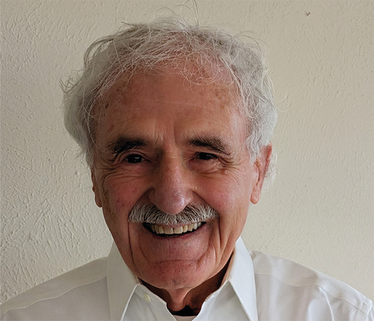
I’ll begin with three reasons for analytical chemistry’s diminished position on the totem pole, before offering some thoughts on what we could do to improve it.
- The totem pole exists in all sciences, but it is particularly brutal among chemists.
- Chemistry department divisions became hardened and competitive with each other.
- Analytical chemistry is taught as a set of techniques rather than the science it is.
First, considering the science totem pole, physics – particularly theoretical and cosmological – is considered to be at the top. Biology and chemistry used to have a similar standing, but recently chemistry has taken a beating (see below). This loss of prestige is rough on chemists who then often take it out on each other. Brutal!
Second, this hyper-competitive spirit has long infected chemistry departments. When I first got to Michigan State, the department was collaborative. We chose which division got the next appointment based on teaching needs and gaps in research. I co-taught an analytical/physical sequence with a senior physical chemist. Then some inorganic and organic hires brought with them the zero-sum philosophy, and competition for internal resources became the name of the game.
Another unfortunate aspect of divisionism was the tendency to hire people classically positioned in that area: the organic division would not hire a protein chemist, the inorganic division rejected organometallic applicants, and so on. The result of this parochialism is that the field of chemistry lost all its exciting new areas. Only in the last two decades did it finally decide to take on biological chemistry, but it was too late to keep the core. We lost medicinal chemistry, materials chemistry, geochemistry, and molecular biology, to name a few. We will not get them back. I believe this is one reason for chemistry’s loss in status. Contrast that with physics departments that embraced cosmology, cryophysics, solid state electronics, and other offshoots. Many departments have even added physical biology – jumping over chemistry, the central science, as though it didn’t exist.
The third problem – a focus on technique rather than science – is something we could have done something about – and potentially still can. When I was in graduate school in the early 1960s, inorganic chemistry shared the bottom rung with analytical. Then, Harry Gray and others lifted inorganic chemistry from a collection of syntheses to the science of inorganic reactions, making them predictable. This gift of a rationale to the area lifted it up as a major contributor to material science and gave it a solid space in departments nationwide.
Analytical chemistry was taught to me as a series of unrelated techniques at the undergraduate and graduate levels. See the parallel with inorganic? The big problem: it is predominantly still taught that way. We are more accepting of expanding the purview than other divisions, taking on electrochemistry in the 1950s, chromatography in the 1960s, and mass spectrometry in the late 1970s. We might be considered more essential if we offered a unifying and predictive science of analysis.
But wait. There is a science to chemical analysis – an approach that binds and informs our methods. There is a science to how measurements (1) become meaningful numbers (2), and there is a science of how to select or develop a method (3) for a particular need. Scientific knowledge (4) is made up of predictive laws and their rationale. The correct application of those laws is a skill, not a science. We could focus more on the knowledge we have produced – the laws for predicting a separation method’s resolution, chromatographic retention time, electrospray ionization response factor, dynamic range, and so on.
On the perception side, there are wonderful stories and fantastic accomplishments to be told. We have improved detection limits and the number of resolved mixture components by an order of magnitude every decade since 1960. We have invented and improved many tools now essential in a wide range of other areas of science and medicine. Should we remind them where they came from? And for the public, how about a NOVA program on the history, magic, and applications of mass spectrometry?
I have had a wonderful professional life in this field where there is so much room for creativity and so many wonderfully collegial people. I have not a moment of regret.
Image credit: supplied by author
- CG Enke, “Data Domains – An Analysis of Digital and Analog Instrumentation Systems and Components,” Anal Chem, 42, 1, 69A-80a (1971). DOI: 10.1021/ac60296a013.
- CG Enke, “The Elements of Measurement,” ACS Meas Sci Au, 2, 5, 405-413 (2022). DOI: 10.1021/acsmeasuresciau.2c00007.
- CG Enke, The Art and Science of Chemical Analysis, Wiley (2000). ISBN 13: 9780471373698.
- CG Enke, “The two parts of a scientific theory” (2023). Available at: https://bit.ly/3R0jMfH
Chris Enke is Emeritus Professor, Michigan State University and University of New Mexico, USA (Chrisenke.net)




